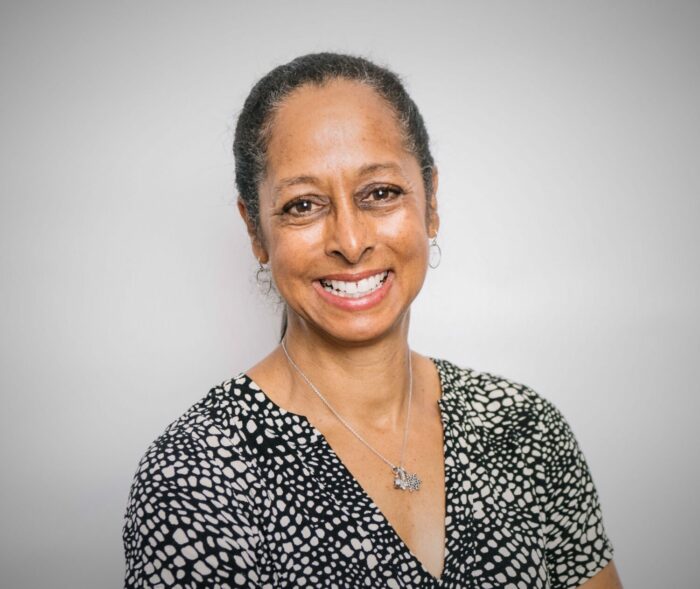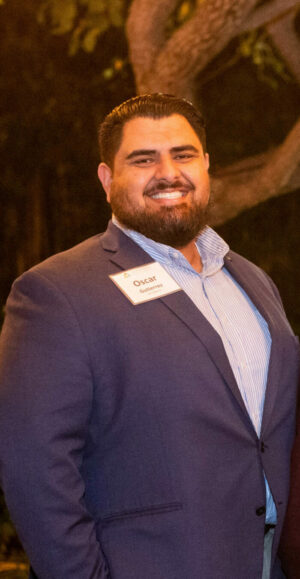Ken Saxon: Leading From Within at 10, and a Decade of Weaving Community


In 2009, when we at Leading From Within completed running our very first leadership program for nonprofit leaders, I remember thinking how sad it would be if we let all these new connections just disperse.
We had attracted top executives from many significant regional nonprofit agencies. The leaders had spent a year getting to know one another and building trust, and many had begun to collaborate where they hadn’t before.
From that moment 10 years ago, our organization has been intentionally and actively weaving ongoing connections and community among social changemakers here in Santa Barbara County. Little did we imagine that a decade later, our network of program alumni would include more than 300 dedicated social sector leaders. And every month we see our graduates step into positions of growing civic influence.
A decade ago, we never imagined how big all this would get.
Weaving a network among previously disconnected and disparate leaders is a big part of what our nonprofit organization, Leading From Within, exists to do.
For us, this is both a strategy and a calling. It’s a conscious strategy to advance our mission to strengthen our region by investing in and connecting the people who drive and create change.
But for me personally, connecting good people and fostering relationships among them feels like one of the most impactful ways I can make a difference. In a world filled with loneliness, alienation and disconnection, helping folks cultivate a sense of community feels awfully important.
In recent years, I’ve seen powerful community weaving approaches used locally by nonprofits, schools, collaborations and coworking spaces, among others. It’s a different way of operating.
The foundation of this approach is intentionally fostering engaged and trusting relationships between disparate people. This article outlines a few things I’ve learned on this decade-long journey of weaving community and relationships.
The Good and the Bad of Community
There has been much written about trends in American society toward increasing alienation, loneliness and disconnection. Social science research has been documenting trends that people are:
» Less happy, despite having more prosperity and time than people in prior generations

» More fearful, despite data showing that on most (though not all) measures, there’s less to fear than at any other time in human history
New York Times columnist David Brooks noted some of the data documenting these trends in a column last year.
“In the 1980s, 20 percent of Americans said they were often lonely,” he wrote. “Now it’s 40 percent. Suicide rates are now at a 30-year high. Depression rates have increased tenfold since 1960, which is not only a result of greater reporting … There’s been a steady 30-year decline in Americans’ satisfaction with the peer-to-peer relationships at work.”
That is a pretty scary picture of the state of things.
A number of books in recent decades — like Bowling Alone and Coming Apart — have chronicled the long decline of social connection in America. We’re not as communal as we once were in our country. The promise of technology to connect us all around the world has somehow evolved into a darker landscape of alienation and dissatisfaction.
And where we do connect these days, the result seems to be more tribal (us versus them) than real nourishing connections across the lines of difference and diversity.
If communal activity is a critical part of what people need, why are they doing less of it?
In my experience, most people yearn for real connection. They long to be truly seen for who they are and what they have to offer.

But despite my ambivalence, there is a type of community I hunger for. I know it exists, because I’ve experienced it — really intentional and well-structured personal and professional development spaces, like the ones we cultivate in our programs and alumni networks.
In such developmental communities, I’ve seen profound things shift in me, and in others. These spaces generate energy and power in people, rather than using it up. They are designed so participants feel safe enough to take risks and step out on their growing edge. I leave such spaces feeling so much more — more OK, more capable, more energized, more connected and more supported.
I use the term “generative community” to describe this type of coming together that grows everyone into more of the person they aspire to be. Generative community invites people to come together in ways that generate things we all need and crave to do our best work and live our best lives — things like ideas, energy, inspiration, connections, creativity and friendship.
The How of Generative Community
Holding space for generative community requires clear ground rules. In our programs and alumni networks at Leading From Within, we teach a number of practices around listening, reflection and asking open questions.
And we actively discourage people from doing things that so many of us do that get in the way of real community — like giving unrequested advice, interrupting one another, debating each other or responding by talking about oneself.
Generative community also requires people to show up fully. It’s somehow become acceptable today in meetings and convenings for people to multitask, feeding their habit of texting and emailing and social media under the table.
Multitasking gets in the way of the two most important thing we grow in our programs: learning and relationships. We are not shy about setting explicit group norms asking people to be fully present and to put the technology away.
Another key ingredient in fostering relationships and trust is time. You’ve got to slow people down. There is no way to foster durable and meaningful relationships between people in a time-efficient manner, and it also doesn’t happen very well online.
Fundamental to weaving relationships is creating spaces where people listen deeply to themselves (reflection) and to each other. Listening is something most of us in our culture do pretty poorly, so we actually teach listening skills in our programs.
When I listen to someone and am present to their story, it pulls on my empathy and I begin to see commonalities. This overpowers my natural tendency to label and judge, and trust begins to arise.
Learning how to cultivate generative community is relevant to everyone — whether you are responsible for an organization, a family, a classroom, a community group, or just trying to create a more generative life for yourself.
In our next decade at Leading From Within, I’d like to see us more explicitly teach these kinds of facilitative leadership skills to many others.
Weaving Community Takes Commitment
Ten years ago when we at Leading From Within made a commitment to weave a network out of our program alumni, we had 18 leaders to attend to. Now we have 20 times as many!
Cultivating community among 300-plus people takes an awful lot of time, energy and resources — things we rarely feel we have a surplus of in our small nonprofit organization.
Why do we do it? Relationships and trust are required ingredients to achieve our strategic vision of creating a more collaborative and innovative social sector in our region. To achieve these big goals, we can’t just say goodbye to people when they complete a year-long program.
I can share many stories of good things that have resulted locally due to connections we have fostered in our network — collaborations doing systems-level work on complex issues, partnerships between organizations that improve effectiveness and reduce duplication, a merger between agencies with similar missions, and much more.
We also have many of our alumni leaders meeting in peer circles, supporting each other monthly on their priority issues. And all the leaders in our network feel less alone and more connected, knowing there are others who empathize with their challenges and have their back. Although it’s a lot of work fostering alumni networks, I’m highly confident that the return on investment is high.
Among our peers in education and leadership development, I often hear a yearning to keep their alumni connected in a deeper way, but also a sense of resignation about their organization’s ability to do this. It just feels too hard and expensive.
But it can be a powerful way to amplify your organization’s impact. It certainly has done that for our small nonprofit. Due to the network we’ve been tending for a decade, our little organization has a very broad reach.
I feel more strongly than ever that one of the callings of our time is to connect all people in generative community in some way. In mid-May, I’m headed to Washington, D.C., to meet with other people who are weaving community in towns and cities all across America at a gathering of The Aspen Institute’s Weave: The Social Fabric Project.
David Brooks has identified “community weaving” as a budding movement in our country, responding to the needs of our times. I’m excited to convene with kindred spirits from across the country and to have the chance to learn from them.
At a time when the social fabric in our country has been fraying badly, maybe this movement of weavers can play a constructive role in repairing it.
— Ken Saxon is board president of Leading From Within and an instructor in its Courage to Lead program. Click here to read previous columns. The opinions expressed are his own.



